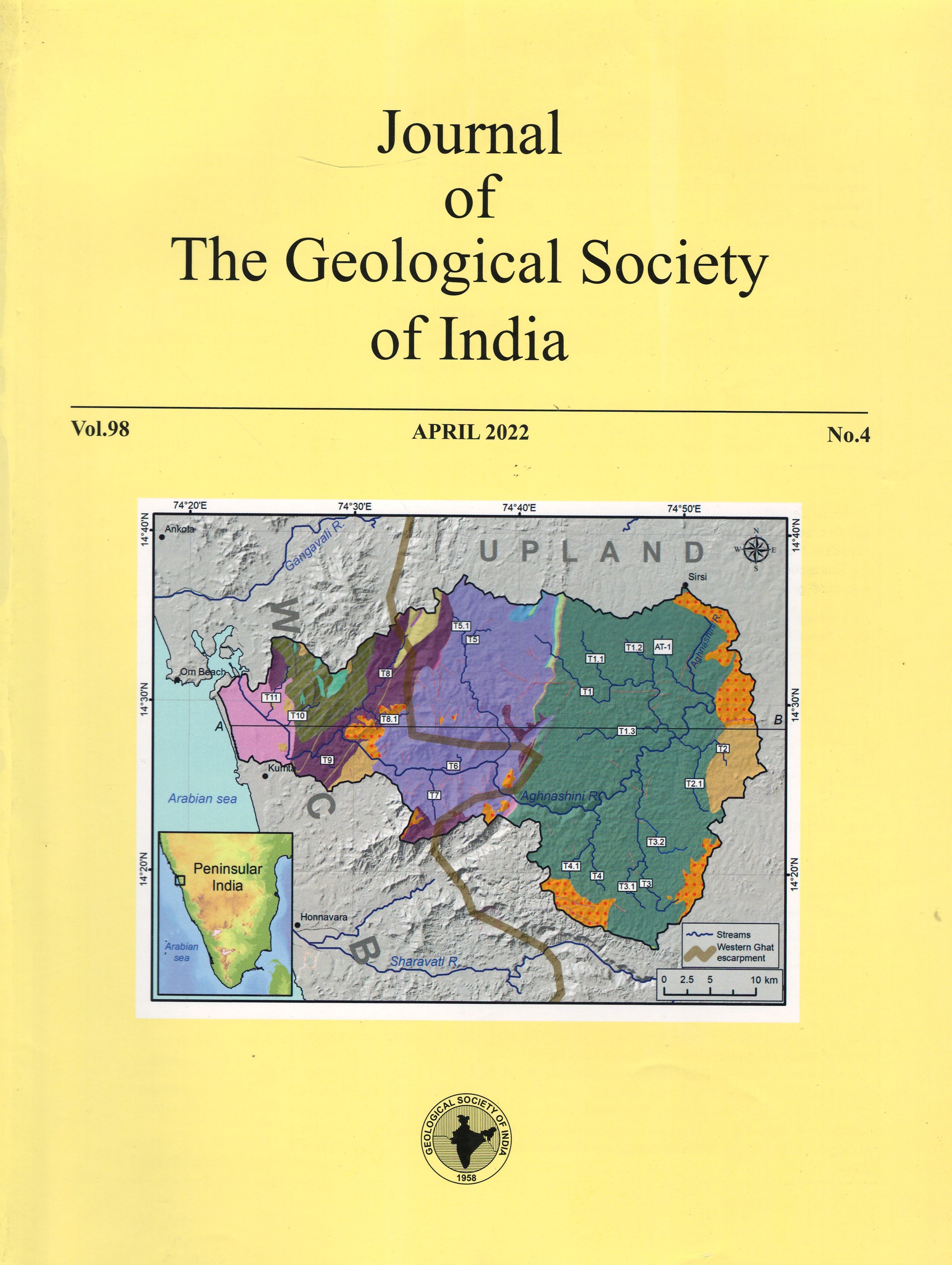Unraveling Depositional Mode and Provenance of Kopili Formation, Northeast India
DOI:
https://doi.org/10.1007/s12594-022-2007-0Keywords:
No KeywordsAbstract
The Kopili Formation of North Cachar Hills, NE India has been studied to unravel its depositional mode and provenance. For this, a study of grain size distribution and heavy mineral assemblage of representative sandstone samples of the Kopili Formation was undertaken. Further, the published information on the Kopili Formation occurring in the adjacent areas was compiled. The Grain size study reveals that the Kopili sandstones are mostly bimodal and polymodal, fine-grained sands mixed with medium grained sands, moderately well sorted to poorly sorted, coarse skewed to near-symmetrical, and platykurtic to extremely leptokurtic. The Passega CM (C= one percentile and M= Median) pattern discloses saltation and suspension as the dominant transporting modes of the studied sandstones. Linear discriminant function (LDF) analysis reveals that the Kopili sandstones were deposited in beach and agitated shallow marine environment. The heavy mineral assemblage represented by zircon, tourmaline, rutile, garnet, chlorite clinopyroxene, staurolite, and opaque indicates mixed provenance (silicic igneous and metamorphic) for the Kopili sandstones. The zircon-tourmaline-rutile (ZTR) maturity index ranging from 31.03 to 88.41 (average 64.49%) discloses immature to sub-mature nature of the Kopili sandstones. Based on the study it is inferred that the Kopili sediments are of mixed provenance and deposited broadly in marine environment.

 Joya Moni Mout
Joya Moni Mout






